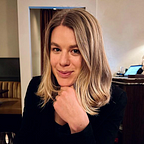Finding freedom in embracing pain
As a chronic optimist with a tendency to fill every second of life with fun, I’ve found pressing into the hard things in life a slow but incredibly freeing process. For years I lived as if I was allergic to anything painful. My life was a non-stop storm of activities, travel, work and relationships. Ignoring mental and physical rest, I avoided reflection. I ran on long “highs” of life, until the pent-up emotion would cause a deep, quick crash. Quickly downplaying these painful experiences, I would put a viciously positive spin on life.
Elizabeth Dias framed the idea of toxic positivity well,
“The idea that we’re all supposed to be positive all the time has become an American obsession. It gives us momentum and purpose to feel like the best is yet to come. But the problem is when it becomes a kind of poison, in which it expects that people who are suffering — which is pretty much everyone right now — are somehow always supposed to find the silver lining or not speak realistically about their circumstances.”
When you avoid pain its roots only wrap deeper around your heart, ready to sprout up at inopportune moments. There’s a freedom and joy that comes in embracing pain, in giving up the quest for a silver lining.
When pain shows up
If you’re reading this, like me, you are likely part of the population that has life relatively easy compared to the rest of the world. It’s tempting to push down our own feelings when looking at larger socioeconomic issues. When pain shows up, it often brings shame and guilt along for the ride, especially when compared against another’s suffering.
Comparison does not help us identify, understand or evaluate what we are feeling. Trying to devalue pain doesn’t bring growth. Feeling guilty for experiencing sadness can easily take us into a dangerous spiral of negative self-talk, intensifying and increasing inhibiting emotion.
Circumstances don’t bring value to emotion, emotions are valid on their own and deserve our time and energy to process them. I’ve found these weeks of isolation and physical distancing an amazing time to discover our distractions from negativity. Our routines are disrupted, and many externalities have been stripped away. What do we do when left with simply ourselves and our emotions?
It is undeniable that we are going to face difficulty in life. There’s no getting around it. We are left with the question: What are we going to do with it?
Accepting feelings
A year into a new, gentle life in Southern California — and now a global pandemic — have helped (forced?) me to grow into a more reflective person. I’ve found a new ability to embrace my feelings like never before.
I cried just this morning on receiving news that a professor from my hometown had passed away from COVID-19. I hadn’t spoken with him since I was 17, but remember absentmindedly sitting in his world geography class. I was skeptical of his rambling tales of driving across South America, and his year-round Birkenstock sandals paired with colorful socks. Hearing of his passing hit me deeply with the gravity of the pain that so many are experiencing as this disease takes more and more lives.
It’s important to let ourselves process what we are feeling — not as a means to an end — but a beginning of understanding. We can’t stop painful experiences from occurring, or the associated emotions from arising within us. Good moods don’t subscribe to the on-demand economy, and can’t be delivered with a tap and a click. Sometimes we can only lay in bed and feel terrible.
Gaining perspective
Stepping outside our immediate reactionary responses can provide a helpful, objective perspective into the pain we experience. In my work as a designer, daily I find myself in the “shoes of another”. I speak to my clients from an outside-in perspective, addressing the business problems they bring me from the lens of their users or potential customers. There are four themes we use as designers to understand the perspective of the user: Context, Behavior, Pain and Pleasure.
I started thinking about this same framework as a means of processing emotions that arise in my own life, asking myself questions like:
- When do I feel this way? What triggers this emotion?
- Has this happened in the past? When and why?
- How am I reacting?
- What external factors are contributing to what I am feeling right now?
- Why do I feel so intensely about this?
- What has helped me feel better in similar scenarios?
Embracing what hurts
The designer in me wants to present a tried-and-true solution for finding good in all circumstances. My heart of an optimist wants to wrap my reflections up with a pretty bow of positivity and joy. But what I’m discovering is we can’t always find the good in life. What if we embraced pain? Taking circumstances that we can’t control with all the shit they bring, with or without the promise of a silver lining.
Some things are just going to be awful and we can’t change that. What we can change is our perspective. We can’t always control the situations we find ourselves in, but no one can take away the freedom to change the way we respond.
